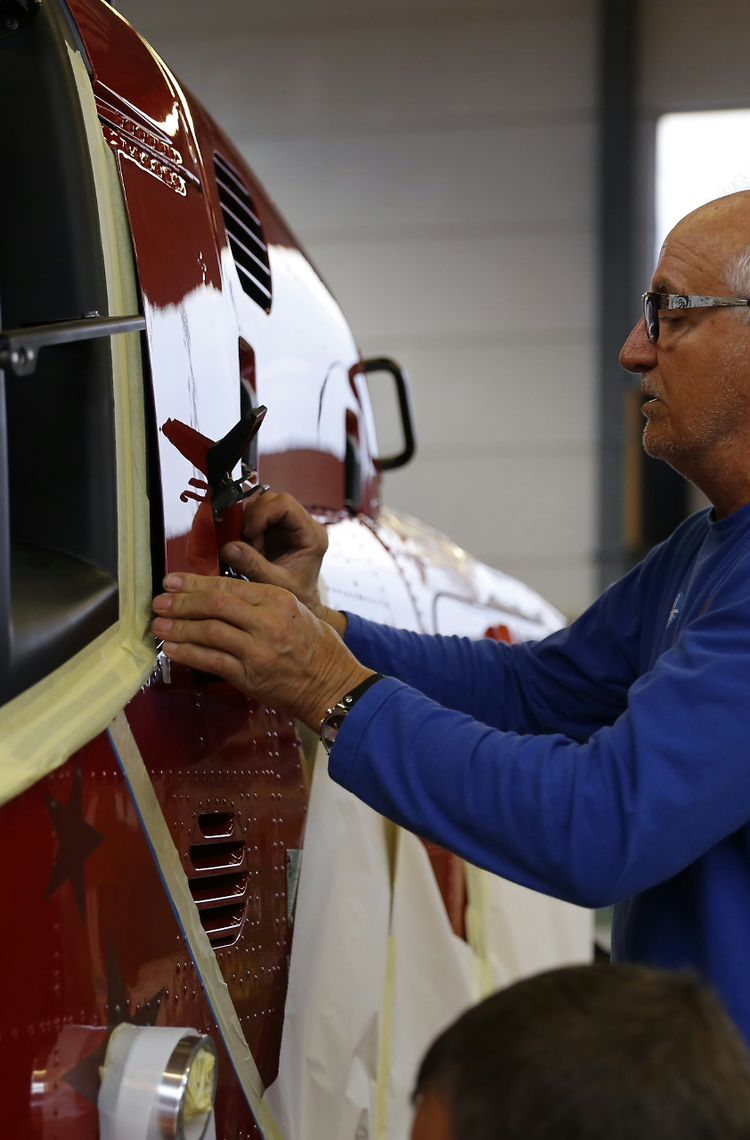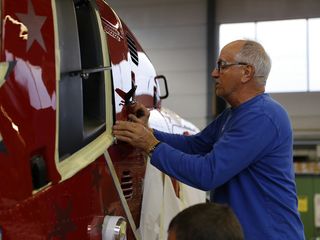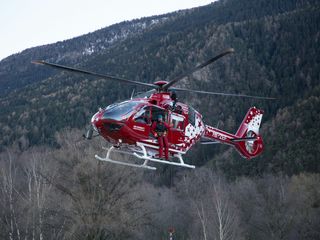Summary
- Swiss operator Air Zermatt became the first company to entirely retrofit their H135 helicopter in-house using the operator's own technicians. The process, employing a kit shipped from Airbus Helicopters in Germany, brought the former T2 aircraft to current T3 performance, and opens the door to other operator-led upgrades.
When Airbus Helicopters launched its H135 helicopter in 2014, the manufacturer announced a retrofit option at the same time to upgrade its previous versions to current standards. The solution appealed to René Lauber, technical director at Air Zermatt. The company performs Emergency Medical Services operations in the mountains near the southern Swiss border, placing high and hot demands on their aircraft in the summer season. Air Zermatt’s 13-year-old T2, while a workhorse when it first entered service, is lower in performance levels compared to other competitors in its class today.
“Air Zermatt needed performance for operations in the high mountains,” says Ralf Nicolai, sales promotion manager at Airbus Helicopters in Donauwörth, Germany. “When we introduced the upgrades to the H135 with a service bulletin, Air Zermatt was interested because the retrofit would give them exactly the performance they were looking for.”
The process began with a learning curve for both parties, as the helicopter would be the first with Turbomeca engines to be retrofitted outside of Airbus Helicopters facilities. Frequent exchanges between the two companies ensured documentation and approvals were done correctly. In this particular case the starting point was a T2 version which had to be transformed into a T2+ and finally to a T3. In addition, the certification of some STC installations had to be extended to the T3 version as well.
“After we signed the contract, there was never a discussion that Airbus Helicopters would do the retrofit,” says Lauber. “The advantage was always that our maintenance shop could do the retrofit itself. Airbus Helicopters delivered the parts and was always in contact. At the end, it was a great project.”
Besides the retrofit*, Air Zermatt took advantage of the downtime to improve other aspects of its aircraft as well, adding to what would ordinarily be about a one and a half month operation. From a kit of parts and components delivered from the Airbus Helicopters site at Donauwörth, along with manuals and service bulletins, the retrofit consisted of replacing the H135’s main rotor blades, both Turbomeca digital engine control units (DECU), horizontal stabilizer and some cockpit instruments. Because the main gearbox wasn't compatible with the T3 version, the MGB was replaced as well.
“We upgraded the avionics and we did the 1,000-hour inspection at the same time,” says Lauber. “The biggest job on the retrofit itself was the modification of the air inlet covers. We were able to do this because we have a technician who is very experienced in composite work.”
Because Air Zermatt’s maintenance crew is licensed for the 135 series of helicopters, there was no need for additional training to tackle the retrofit. “We know the helicopter very well, having flown it for more than 5,000 hours,” says Lauber. “We were already very experienced, so doing the retrofit was not a big problem. Ordinarily, any maintenance shop should be able to do it if they have experience on the H135 family.”
Experience also counted at Airbus Helicopters’ end. Four separate teams in Donauwörth contributed to preparing the retrofit materials. “One of the most important teams is the service bulletin team,” says Nicolai. “Then the engineering department had to verify the configuration for this particular aircraft. No retrofit is 100 percent identical from one helicopter to another. That makes it more challenging. And then there is the executor, who brings all the parts from the MRO department in Germany, in connection with the technical support team.”
The helicopter has now flown over 100 hours. “I can say today, we would do it again,” says Lauber. “It was one of the best work the technicians have ever done, and one of the best for everybody in our company.”
* As basic retrofit is defined as modifications performed according to service bulletin “EC135-71T-045 Retrofit Power Plant T2+ to T3”


